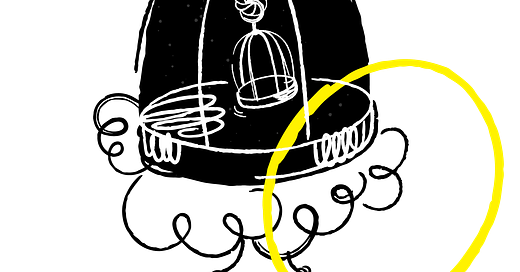Price-feature paradox and the case of missing identity
On finding the right balance between business identity and driving growth. How should you choose between finding an identity and achieving a competitive advantage?
Meet Carl; Carl is in his 40’s. Carl is brilliant, deeply experienced in his professional field and is regarded by peers and close network as someone with disruptive potential.
Carl recently read an article whose variations are popping up in several publications geared towards the seasoned executive turned entrepreneur – about the median age of a successful startup founder being 45. Carl is happy to read this; he finds it comforting because his startup, which he envisioned would take the world by storm, isn’t growing nearly as quickly as he had hoped.
So what is Carl’s problem? What is he doing wrong? The answer is nothing. The mistake, if any, is what we designate as a problem. The speed of light is not a problem. It is the defining law of nature. We can dream of FTL drives; we can conjure up wormholes with fictional characteristics that let us bend the laws of physics to meet our desires. But nothing we do changes the speed of light. It’s a constant. We have to work around it.
The price-feature paradox
When founders create a new business in an industry with already clear market leaders, they are often presented with a choice – to build something that beats their competitors either on price or on service coverage. Competitive advantage gets imbibed into the business plan and sometimes is even a part of the hallowed napkin paper thesis. The problem, as we talked about just now, is right here.
It is nearly impossible to develop a magic formula that beats a new startup’s established competitors on both price and service depth. Disrupting the market on price requires lowering margins that hurt profitability. Increasing feature or service depth requires breakthrough technological superiority or exponentially larger human resources. Both are highly unlikely to be at an early startup’s disposal. First, because of a lack of proprietary data to do any significant technological advancements, and second, there isn’t enough revenue to build up service personnel.
What does Carl do then? He goes for the best middle ground. He introduces a clever pricing mechanism that beats more prominent competitors on the barrier of entry from a pricepoint and features depth on higher priced-plans.
The plan is brilliant in its cunningness — lure in the price-conscious buyers by offering them a cheaper alternative and convince the bigger buyers with more features or service depth at comparable price points. Where is the paradox, then?
Further reading on the subject:
The Winning Pricing Strategy - Podcast episode with Underscore VC CFO and Patrick Campbell - Profitwell Founder.
Branding must-haves that don’t occur to startups until it’s too late by Elizabeth Hague, Co-founder of Wildcat Echo.
Recommended reading for the weekend:
This week, the Weekend Courier recommends stories that go from ritualistic holidays to the art of making planets and since it’s the weekend, how an indie magazine defined the millennial aesthetic.
The Earth Day that changed the world
In conversation with one of the original Earth Day organizers on how the observance has changed over time and how to bring back the urgency needed towards building a movement towards change. Read more on Outside.
Remaking the world, one globe at a time
How Peter Bellerby’s London globe-making workshop strives to carry on a tradition that nobody even noticed had gone missing. Read more on Beside.
How Kinfolk magazine defined the millennial aesthetic
The cult quarterly helped set the pace for the upwardly mobile, Instagram-perfect 2010s lifestyle. Off the page, its creators’ lives have been somewhat messier. Read more on Vanity Fair.
That’s all for this weekend. Have a read, slow down a little and go make a difference.



